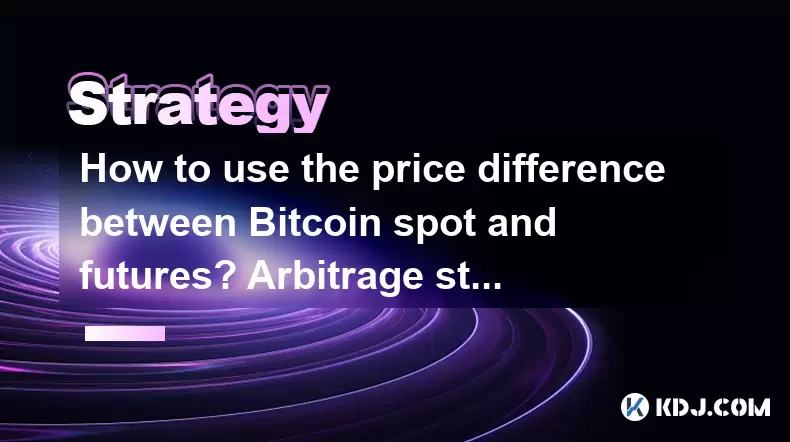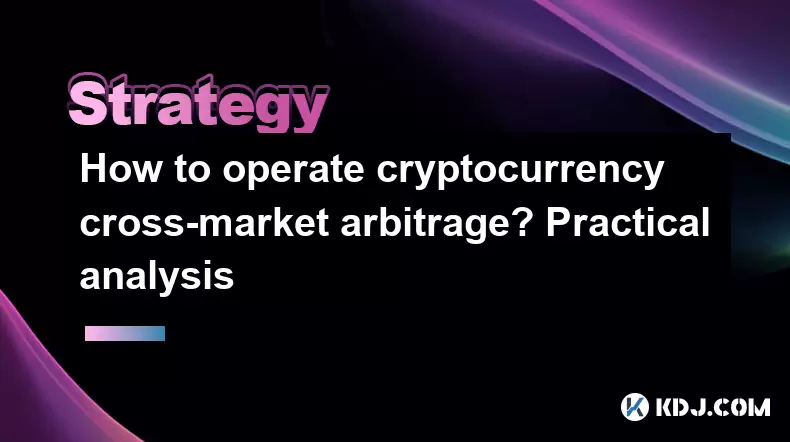-
 Bitcoin
Bitcoin $106,684.2039
-0.52% -
 Ethereum
Ethereum $2,399.8703
-0.98% -
 Tether USDt
Tether USDt $1.0003
0.01% -
 XRP
XRP $2.0879
-1.38% -
 BNB
BNB $643.7981
-0.29% -
 Solana
Solana $141.0383
-0.39% -
 USDC
USDC $0.9999
0.01% -
 TRON
TRON $0.2718
0.30% -
 Dogecoin
Dogecoin $0.1588
-0.85% -
 Cardano
Cardano $0.5472
-1.45% -
 Hyperliquid
Hyperliquid $36.1292
-0.48% -
 Bitcoin Cash
Bitcoin Cash $502.5414
2.20% -
 Sui
Sui $2.7016
3.59% -
 Chainlink
Chainlink $12.8198
-2.00% -
 UNUS SED LEO
UNUS SED LEO $9.0559
0.58% -
 Stellar
Stellar $0.2333
-0.73% -
 Avalanche
Avalanche $17.2524
0.16% -
 Toncoin
Toncoin $2.8273
0.70% -
 Shiba Inu
Shiba Inu $0.0...01112
-0.86% -
 Litecoin
Litecoin $83.4315
-0.94% -
 Hedera
Hedera $0.1439
0.75% -
 Monero
Monero $307.7259
-1.44% -
 Bitget Token
Bitget Token $4.6301
3.49% -
 Dai
Dai $0.9998
0.01% -
 Ethena USDe
Ethena USDe $1.0001
0.02% -
 Polkadot
Polkadot $3.3102
0.39% -
 Pi
Pi $0.5662
0.55% -
 Uniswap
Uniswap $6.8290
0.70% -
 Aave
Aave $256.8983
2.19% -
 Pepe
Pepe $0.0...08994
-2.79%
What coins to invest in online
Sentence: Before investing in cryptocurrencies, it's crucial to assess your investment goals, risk tolerance, and thoroughly research potential coins to invest in.
Jan 10, 2025 at 05:43 pm

What Coins to Invest in Online: A Comprehensive Guide
Key Points:
- Understand your investment goals and risk tolerance.
- Research and analyze different cryptocurrencies thoroughly.
- Diversify your portfolio across multiple coins with varying purposes.
- Monitor market trends and adjust your investments accordingly.
- Consider reputable exchanges and use secure storage methods.
Step 1: Assess Your Investment Goals and Risk Tolerance
Before investing in any cryptocurrency, it's crucial to determine your investment objectives and risk appetite. Consider the following questions:
- Are you seeking short-term gains or long-term appreciation?
- How much of your investment portfolio can you afford to allocate to cryptocurrencies?
- Are you comfortable with potential fluctuations in the market?
Based on your answers, you can establish suitable investment strategies and choose coins that align with your goals and risk tolerance.
Step 2: Research and Analyze Cryptocurrencies
Thorough research is essential when selecting cryptocurrencies to invest in. Examine the following aspects of each coin:
- Purpose: Determine the intended use and functionality of the cryptocurrency.
- Technology: Analyze the underlying blockchain technology, its consensus mechanism, and scalability.
- Team: Investigate the credentials and experience of the development team behind the cryptocurrency.
- Community: Assess the size, engagement, and overall sentiment of the community supporting the coin.
- Historical Performance: Study the historical price movements of the cryptocurrency to identify trends and patterns.
Based on your research, create a shortlist of coins that meet your criteria and offer potential for growth.
Step 3: Diversify Your Portfolio
Diversification is a key strategy in cryptocurrency investing to mitigate risk. Instead of concentrating on a single coin, consider investing in a portfolio of several cryptocurrencies with varying purposes and risk profiles.
- Blue-Chip Cryptocurrencies: Include established coins like Bitcoin (BTC), Ethereum (ETH), and Binance Coin (BNB) for stability and long-term appreciation.
- Altcoins with Specific Use Cases: Invest in coins like Polygon (MATIC), Solana (SOL), and Chainlink (LINK) that provide specific solutions within the blockchain industry.
- DeFi Tokens: Consider adding tokens like Uniswap (UNI), Aave (AAVE), and Compound (COMP) to provide exposure to decentralized finance (DeFi).
Diversification helps balance risk and increase the probability of positive returns across different market conditions.
Step 4: Monitor Market Trends and Adjust Investments
The cryptocurrency market is highly volatile, making it imperative to monitor market trends closely. Follow credible news sources, track market indicators, and analyze on-chain data to identify potential price movements.
Based on your observations, adjust your investments as necessary. Take profits when the market is high, and consider rebalancing your portfolio to capture emerging trends. It's important to avoid impulsive decisions and rely on data-driven analysis.
Step 5: Choose Reputable Exchanges and Secure Storage
Select reputable exchanges with strong security protocols to trade cryptocurrencies. Consider factors like trading fees, liquidity, and customer support.
Once you have purchased your cryptocurrencies, store them securely in hardware wallets, software wallets, or exchange-provided storage solutions. Ensure that your storage methods provide robust security to protect your assets from theft or unauthorized access.
FAQs
1. What are the best cryptocurrencies for beginners?
Suitable cryptocurrencies for beginners include Bitcoin (BTC), Ethereum (ETH), Binance Coin (BNB), Polygon (MATIC), and Litecoin (LTC). They offer a mix of stability, potential for growth, and user-friendliness.
2. How much money should I invest in crypto?
Invest only what you can afford to lose. Allocate a portion of your investment portfolio to cryptocurrencies based on your risk tolerance and financial goals.
3. What's the difference between a hardware wallet and a software wallet?
Hardware wallets provide superior security by storing your cryptocurrencies offline. Software wallets, while convenient, are vulnerable to online hacks.
4. How often should I monitor my investments?
Stay updated with market trends on a regular basis, but avoid making hasty decisions based on short-term fluctuations. Focus on long-term investment strategies and monitor your portfolio at least monthly.
5. What are the risks associated with cryptocurrency investing?
Cryptocurrencies are volatile and speculative, with inherent risks such as price fluctuations, hacks, and market manipulation. Carefully consider the potential risks before investing.
Disclaimer:info@kdj.com
The information provided is not trading advice. kdj.com does not assume any responsibility for any investments made based on the information provided in this article. Cryptocurrencies are highly volatile and it is highly recommended that you invest with caution after thorough research!
If you believe that the content used on this website infringes your copyright, please contact us immediately (info@kdj.com) and we will delete it promptly.
- Queenstown Tech Super-charging: A Glimpse into the Future
- 2025-06-28 00:30:12
- Dogecoin, Ethereum, Solana: Decoding the Crypto Climate in the Big Apple
- 2025-06-28 00:47:15
- Tokenized Securities in Hong Kong: On-Chain Revolution?
- 2025-06-28 01:30:12
- SHIB Price Target: Can Shiba Inu Achieve a Technical Rally to $0.000081?
- 2025-06-28 01:30:12
- Gotta Go Fast! Sonic the Hedgehog Dashes into Magic: The Gathering's Secret Lair!
- 2025-06-28 01:35:12
- Ripple, Ondo, and Unstaked: Navigating Crypto's Choppy Waters
- 2025-06-28 01:50:12
Related knowledge

What are the skills of Bitcoin option hedging? Practical case sharing
Jun 24,2025 at 04:01pm
Understanding Bitcoin Option HedgingBitcoin option hedging is a risk management strategy used by traders and investors to protect their positions in the volatile cryptocurrency market. By using options, individuals can limit potential losses while retaining the opportunity for profit. In essence, it allows one to insulate against adverse price movements...

How to use the price difference between Bitcoin spot and futures? Arbitrage strategy
Jun 20,2025 at 02:56pm
Understanding Bitcoin Spot and Futures MarketsTo effectively leverage arbitrage opportunities between Bitcoin spot and futures markets, it's essential to understand the fundamental differences between these two types of markets. The spot market refers to the direct buying and selling of Bitcoin for immediate delivery at the current market price. In cont...

How to increase DeFi lending income? Strategy and risk analysis
Jun 24,2025 at 02:08pm
Understanding DeFi Lending and Its Income PotentialDeFi (Decentralized Finance) lending has emerged as a popular way to earn passive income in the cryptocurrency space. Unlike traditional banking systems, DeFi lending platforms allow users to lend their crypto assets directly to borrowers without intermediaries. The lenders earn interest based on the su...

How to operate cryptocurrency cross-market arbitrage? Practical analysis
Jun 23,2025 at 04:01am
Understanding Cryptocurrency Cross-Market ArbitrageCryptocurrency cross-market arbitrage involves taking advantage of price differences for the same digital asset across different exchanges. The core idea is to buy low on one exchange and sell high on another, capturing the profit from the discrepancy. This strategy relies heavily on real-time market da...

How to make profits from high-frequency cryptocurrency trading? Sharing core skills
Jun 19,2025 at 05:07pm
Understanding High-Frequency Cryptocurrency TradingHigh-frequency trading (HFT) in the cryptocurrency market involves executing a large number of trades at extremely fast speeds, often within milliseconds. This method relies on small price discrepancies across exchanges or within a single exchange’s order book. Traders use complex algorithms and ultra-l...

What are the methods of cryptocurrency quantitative trading? Detailed analysis
Jun 22,2025 at 11:07pm
Understanding the Core of Cryptocurrency Quantitative TradingCryptocurrency quantitative trading refers to the use of mathematical models and algorithms to execute trades in the digital asset market. Unlike traditional discretionary trading, which relies heavily on human judgment, quantitative trading leverages data-driven strategies to identify profita...

What are the skills of Bitcoin option hedging? Practical case sharing
Jun 24,2025 at 04:01pm
Understanding Bitcoin Option HedgingBitcoin option hedging is a risk management strategy used by traders and investors to protect their positions in the volatile cryptocurrency market. By using options, individuals can limit potential losses while retaining the opportunity for profit. In essence, it allows one to insulate against adverse price movements...

How to use the price difference between Bitcoin spot and futures? Arbitrage strategy
Jun 20,2025 at 02:56pm
Understanding Bitcoin Spot and Futures MarketsTo effectively leverage arbitrage opportunities between Bitcoin spot and futures markets, it's essential to understand the fundamental differences between these two types of markets. The spot market refers to the direct buying and selling of Bitcoin for immediate delivery at the current market price. In cont...

How to increase DeFi lending income? Strategy and risk analysis
Jun 24,2025 at 02:08pm
Understanding DeFi Lending and Its Income PotentialDeFi (Decentralized Finance) lending has emerged as a popular way to earn passive income in the cryptocurrency space. Unlike traditional banking systems, DeFi lending platforms allow users to lend their crypto assets directly to borrowers without intermediaries. The lenders earn interest based on the su...

How to operate cryptocurrency cross-market arbitrage? Practical analysis
Jun 23,2025 at 04:01am
Understanding Cryptocurrency Cross-Market ArbitrageCryptocurrency cross-market arbitrage involves taking advantage of price differences for the same digital asset across different exchanges. The core idea is to buy low on one exchange and sell high on another, capturing the profit from the discrepancy. This strategy relies heavily on real-time market da...

How to make profits from high-frequency cryptocurrency trading? Sharing core skills
Jun 19,2025 at 05:07pm
Understanding High-Frequency Cryptocurrency TradingHigh-frequency trading (HFT) in the cryptocurrency market involves executing a large number of trades at extremely fast speeds, often within milliseconds. This method relies on small price discrepancies across exchanges or within a single exchange’s order book. Traders use complex algorithms and ultra-l...

What are the methods of cryptocurrency quantitative trading? Detailed analysis
Jun 22,2025 at 11:07pm
Understanding the Core of Cryptocurrency Quantitative TradingCryptocurrency quantitative trading refers to the use of mathematical models and algorithms to execute trades in the digital asset market. Unlike traditional discretionary trading, which relies heavily on human judgment, quantitative trading leverages data-driven strategies to identify profita...
See all articles























































































